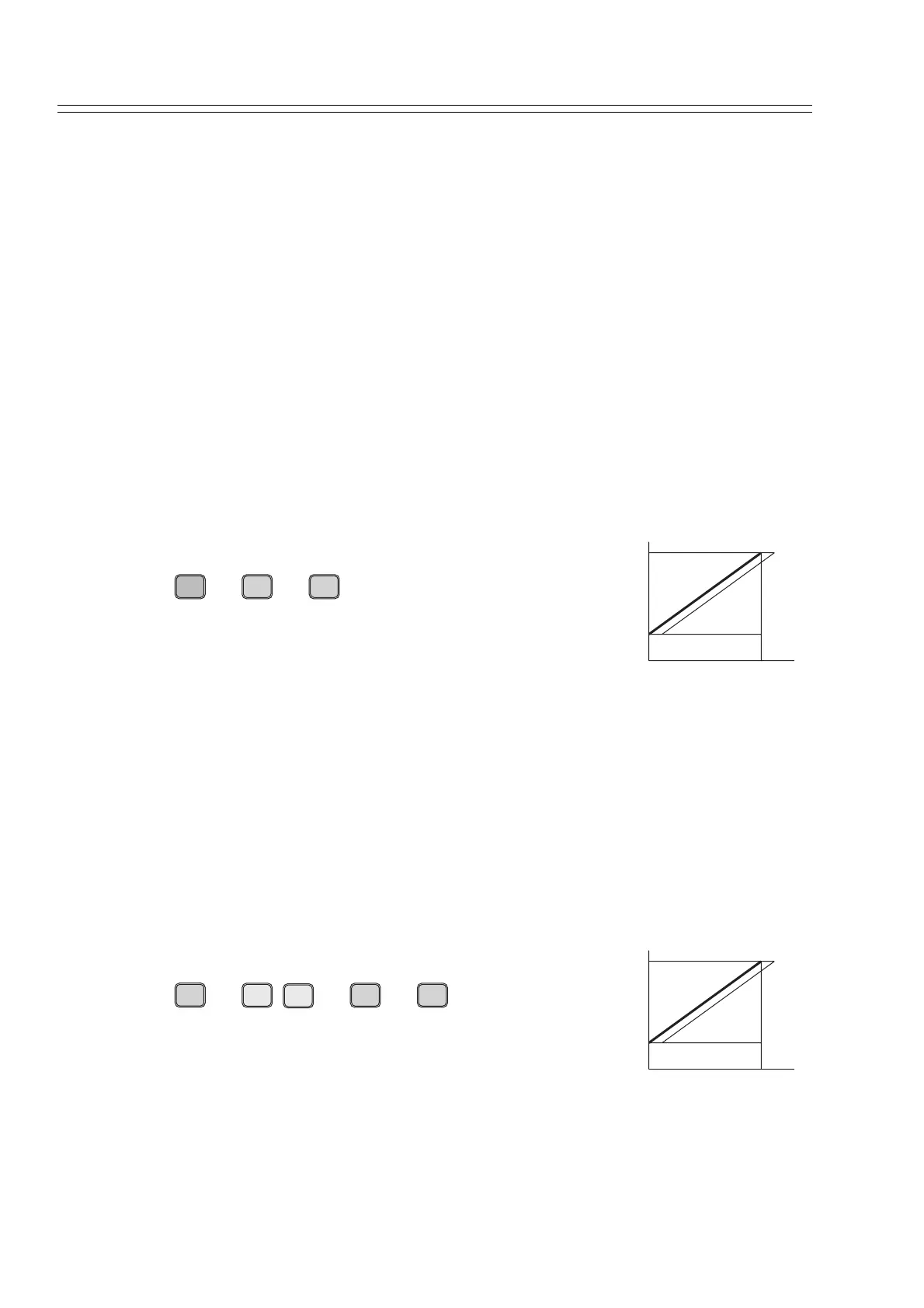Maintenance and Troubleshooting Yamatake Corporation
7-4 ST3000 Smart Transmitter Series 900 Electronic Differential Pressure/Pressure Transmitter
7-1-4 :Zero Adjustment Based on Actual Level (with SFC)
When a differential pressure transmitter is used as a level gauge, the zero point can be
adjusted by either one of two methods. In both cases, adjust the zero point by changing
the LRV and the URV. Refer to 2. Setting the set range (LRV/URV) based on the cur-
rent input value in 7.1.1 Overview. The factory set zero point calibration data is not
rewritten.
Procedure 1
• Set the LRV by setting the current input value for 0%
• Maintain same liquid level for which 0% is the output. Set the zero point based on
this input value.
Example: Current input value=0.025 kPa, LRV=0 kPa, URV=10 kPa
The result of the key-pad operation will be, as follows:
LRV=0.025 kPa, URV=10.025 kPa
Key-pad operations:
Detailed procedures using an SFC are found in "5-9 :
Zero-span Adjustment with Input Pressure Equivalent
to Range".
Procedure 2
• Set the LRV by setting the current input value for the specified value
Example: When the transmitter output is 35%, it can be adjusted to the current liquid
level (e.g. 40%) obtained with a level gauge, using these key-pad operations.
LRV=0 kPa, URV=10 kPa are changed to LRV=0.5 kPa, URV=10.5 kPa
Key-pad operations:
Detailed procedures using an SFC are found in "5-8 :
Zero-point Adjustment -- Based on Actual Liquid
Level".
0mA
4mA
10kP
0
LRV
E
0%
G
SET
ENTER
( Yes )
NON-VOL
0mA
4mA
10kP
0
OUT-
J
PUT
INPUT
R
4
Z
0
ACT PR
G
SET
ENTER
( Yes )
NON-VOL
